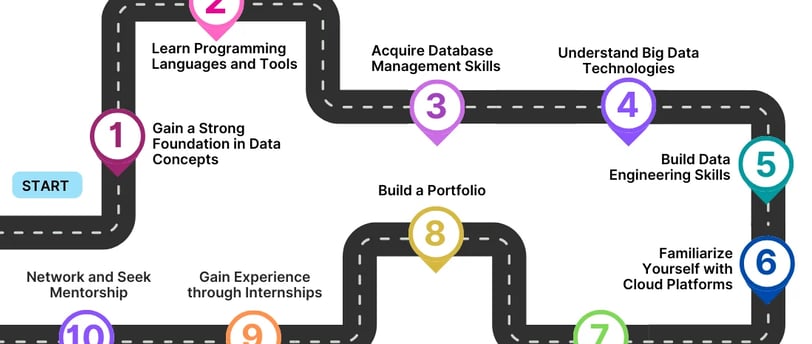A Simple Guide to Becoming a Data Engineer
Blog post description.
Bikramjeet Ladania, Fabric Community Member
7/19/20242 min read


Becoming a data engineer can feel like a big goal, but it is really a series of small steps. Here’s a simple guide to help you plan your path, with a few examples from my own journey.
1. Learn the basics of data and code
Start with SQL: Learn how to ask for data (Select/Joins), add new data, and update data.
Pick a programming language: I chose Python and C#. They help you clean and move data.
Get hands-on: Open a free trial account in Azure or Databricks. Play with small data sets.
In my first co-op as a Web Analyst, I wrote simple HTML and JavaScript. That gave me confidence to move into backend work later.
2. Build small data pipelines
Extract, transform, load (ETL/ELT): Learn how to move data from one place to another.
Use tools like SSIS or Azure Data Factory (ADF): These help you schedule and run jobs.
Practice on real data: Try cleaning a CSV file and loading it into a database.
I built many SSIS packages to load test data into SQL Server. That taught me how to design steps and catch errors early.
3. Master data storage and modeling
Study data warehousing: Learn common layers such as raw (Bronze), cleaned (Silver), and business (Gold).
Use cloud databases: Try Azure SQL or Synapse Analytics or MS Fabric.
Design clear tables: Good table names, schemas and keys make your queries faster.
4. Scale up with big data tools
Learn Spark or PySpark: These let you process large files in parallel.
Explore Databricks: Try writing some notebooks that read from and write to a data lake.
Watch performance (Important): Tune your code so jobs run in minutes, not hours. Make sure all the processing time, computing power accounted when design solutions.
5. Automate and secure your work
Use infrastructure as code (IaC): Tools like Terraform help spin up resources reliably and help you easily replicate the infrastructure in other environments.
Set alerts and logs: Use Azure Logic Apps or similar services to watch for failures and send the notifications.
Manage access: Apply security roles so only the right people see the sensitive data.
6. Keep learning and get certified
Take online courses: Platforms like Microsoft Learn and Databricks Academy are free.
Earn certifications: Complete Data Engineer and Databricks Data Engineer exams.
Join communities: Attend meetups, seminars or forums to ask questions and share tips.
Final thoughts
Becoming a data engineer is a journey of steady steps. Start with SQL and coding, then build simple pipelines. Move on to warehouses and big data tools. Along the way, automate your work and secure it. With each skill you add, you’ll be closer to your goal. Good luck on your path! :)
